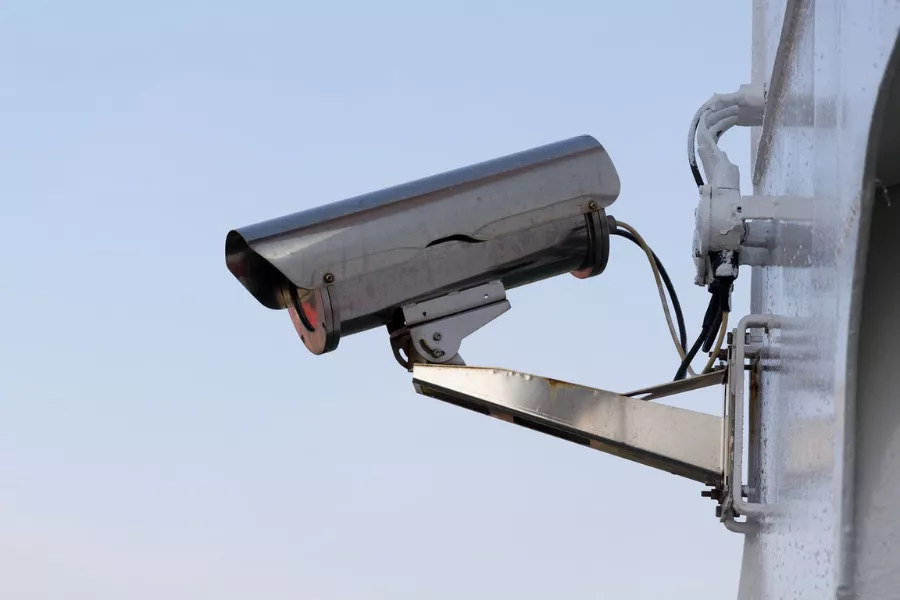As most of you already know, Quezon City will be fully implementing its No Contact Apprehension Program (NCAP) on July 1, 2022. So, in order to quell any questions about this, they have released a couple of answers to some frequently asked questions (FAQ) regarding the new program. Let’s go over them one by one to gain a fuller understanding of Quezon City’s NCAP.

The NCAP has no biases, and it sees all
1. What is the NCAP?
The NCAP, as its name implies, is a system that is able to capture traffic violators without the need for physical apprehension by traffic enforcers. To do this, it employs a series of traffic enforcement cameras that are placed strategically on Quezon City’s main thoroughfares.
2. How will the NCAP apprehend violators?
Once the NCAP system has caught a vehicle in the act of violating traffic rules and laws, a notice of violation (NOV) will be mailed to the address of the said vehicle’s registered owner. It will be delivered within 14 working days from when the violation was recorded. Non-residents of Quezon City may get the NOV beyond the said time frame.
3. How does one pay the NCAP’s fine or penalty?
Payment of fines incurred through the NCAP may be done through this website (link). It is also done at select banks via their over-the-counter payment services. Third, one can also visit the Department of Public Order and Safety at the Quezon City Hall Compound. The latter is open from Monday to Friday, 8:00 a.m. to 5:00 p.m.
4. Is there a deadline for the said fine or penalty?
One must pay the fine within 30 days of receiving the NOV.
5. What will happen if I can’t pay the fine or penalty?
For starters, a surcharge of five percent will be added to the said fine each month until said fine is paid. Also, the Land Transportation Office (LTO) will be informed of your failure to pay the fine and so will impose an alarm on the vehicle’s registration. One cannot renew the car with the said alarm, and it will only be deactivated once the said fine is paid.
![The Traffic Adjudication Board is found in the QC DPOS building. [Photo: Google maps] A picture of the Quezon City DPOS building.](https://img.philkotse.com/temp/2024/07/26/dpos-9292-wm-38d1.webp)
The Traffic Adjudication Board is found in the QC DPOS building. [Photo: Google maps]
6. How does one contest the NOV?
You can protest the NOV by filing a protest at the Traffic Adjudication Board (TAB). However, one must do this within 10 days of receiving the NOV. The TAB office is located at the DPOS Building, Quezon City Hall Compound.
7. I no longer own the vehicle that was caught by the NCAP. Should I pay for the fine?
Do understand that you can actually indicate the actual owner of the vehicle. One can do this by filing a protest to the TAB within 10 days from receiving the NOV. In this case, one should provide the car’s notarized deed of sale, as well as the address and identity of the car’s buyer.
If the vehicle’s buyer also fails to pay the fine or penalty, the LTO will also impose an alarm on the said vehicle’s registration.
8. I was not driving the vehicle when it was caught by the NCAP. What should I do?
As with indicating ownership, you can also nominate the driver of the vehicle when it was caught by the NCAP by filing a protest to the TAB within 10 days of receiving the NOV. For this, you should provide a copy of the actual driver’s license, a notarized affidavit of the alleged driver which certifies that he/she was indeed driving the vehicle in question, as well as a copy of the NOV.
Failure to pay the fine by the actual driver will also result in the LTO putting an alarm on the car’s registration.
9. The vehicle caught by the NCAP was stolen? What should I do?
Inform the Traffic Adjudication Board (TAB) that it was stolen by providing a copy of the Philippine National Police’s or the LTO’s report indicating that it was indeed stolen before the traffic violation occurred. Likewise, one should do this within ten days of receiving the NOV.
10. I committed a violation due to an emergency?
One can also protest one’s violation by presenting to the TAB any proof of your emergency concurrent to the said violation. And yes, one should do this within 10 days of receiving the NOV.
11. Where will the NCAP cameras be installed?
At the start of the NCAP’s operations on July 1, 2022, cameras will be installed at these locations:
-Quirino Highway –Susano Road
-Quirino Highway – Zabarte Road
-Quirino Highway – Tandang Sora
-Rodriguez – Tomas Morato
-Rodriguez – Gilmore
-Rodriguez – Hemady
-Aurora – Hemady
-Aurora – Gilmore
-Aurora – Broadway
-Aurora – 20th street
-West Avenue – Baler
-East Avenue – BIR
-Kamias – Kalayaan
-P. Tuazon – 13th
-P. Tuazon – 15th
![For now, the QC government is prioritizing intersections [Photo: Google maps] A picture of the P.Tuazon and 15th intersection.](https://img.philkotse.com/temp/2024/07/26/ptuazon15th-8600-wm-c04d.webp)
For now, the QC government is prioritizing intersections [Photo: Google maps]
12. With the NCAP in place, will traffic enforcers continue to operate?
Yes, traffic enforcers will still apprehend violators, confiscate driver’s licenses, etc. But if a violator is caught by the NCAP as well as a traffic enforcer, the latter’s apprehension will take precedence.
13. Where will the fees paid by the violators caught by the NCAP go?
These will go to the Quezon City treasury. It will then be used to support the city’s many projects.
For more automotive news and the latest traffic updates, keep it here on Philkotse.
Recent posts
- quezon city no contact apprehension full implementation july Jun 27, 2022
- no contact apprehension quezon city Oct 12, 2021
- quezon city no contact apprehension soon Sep 03, 2021












